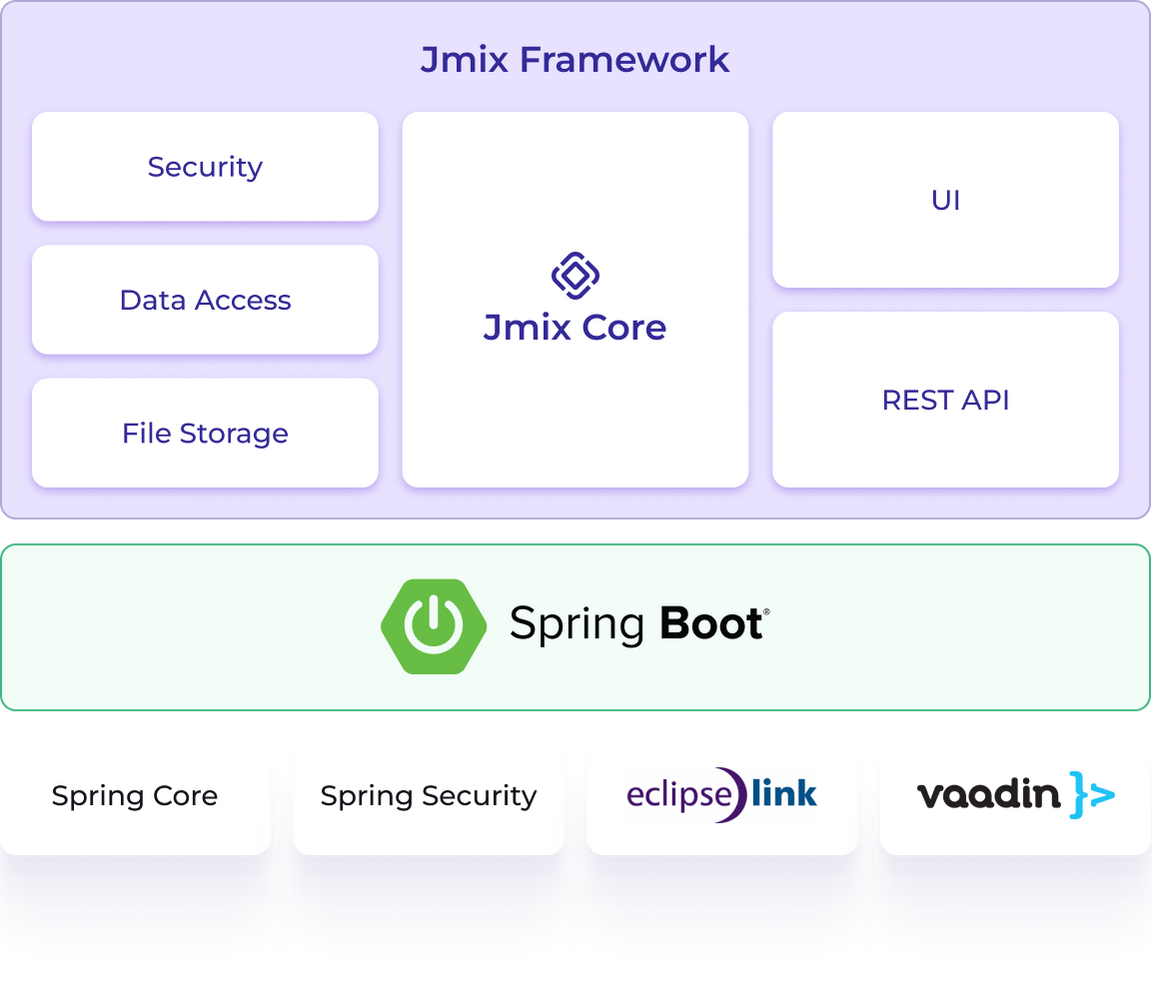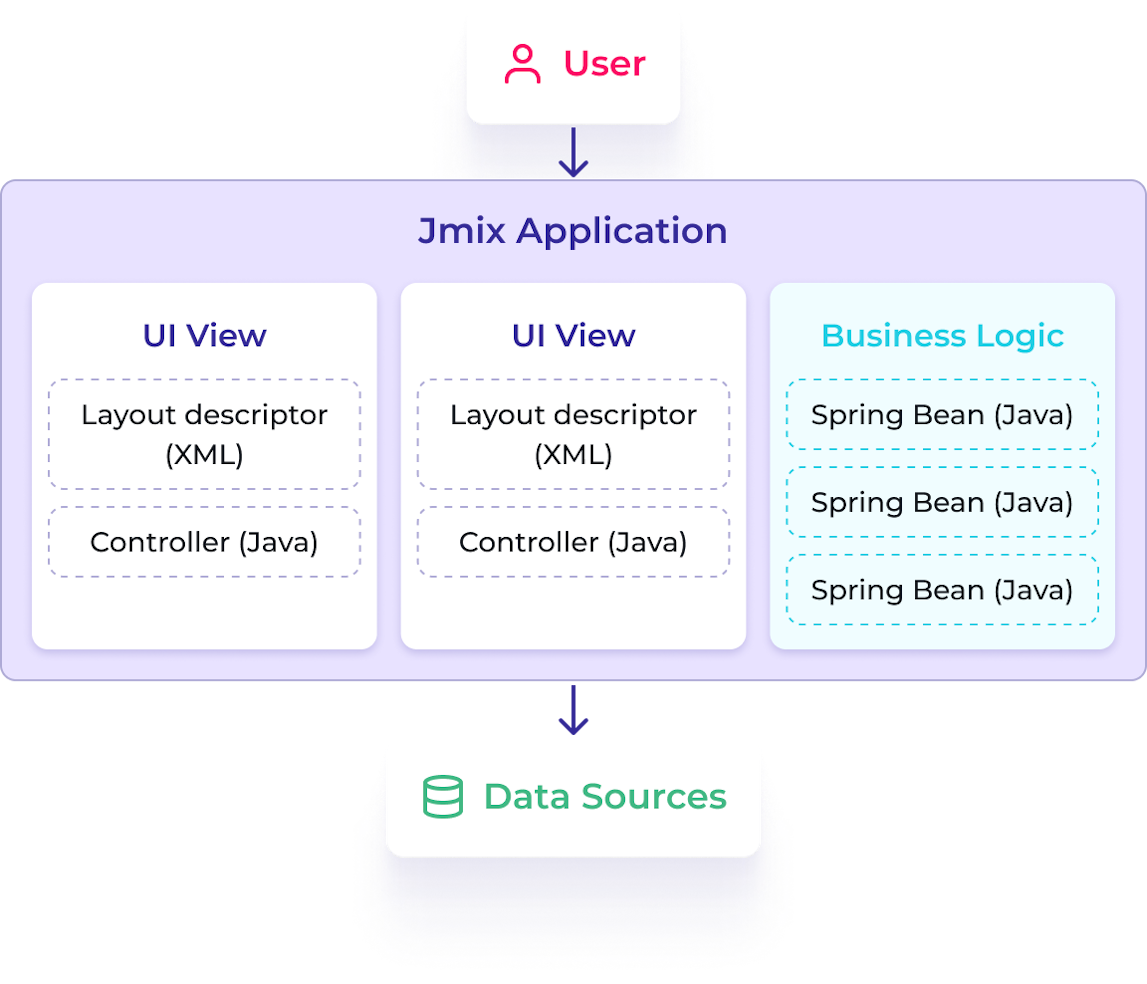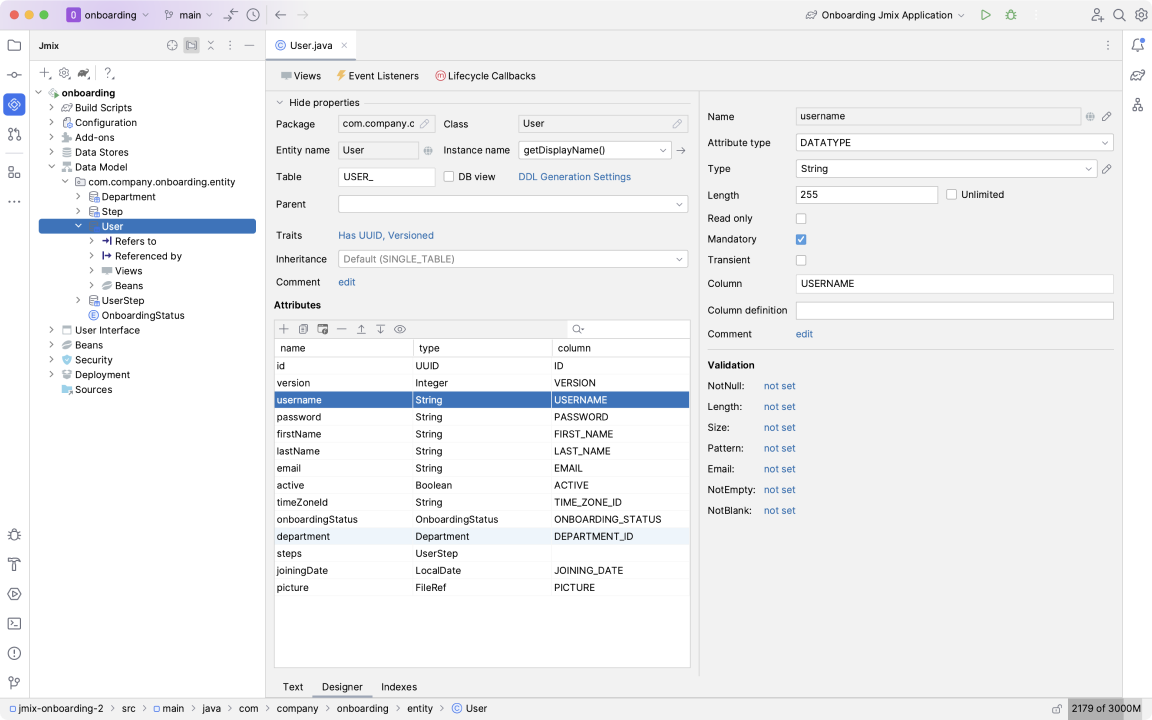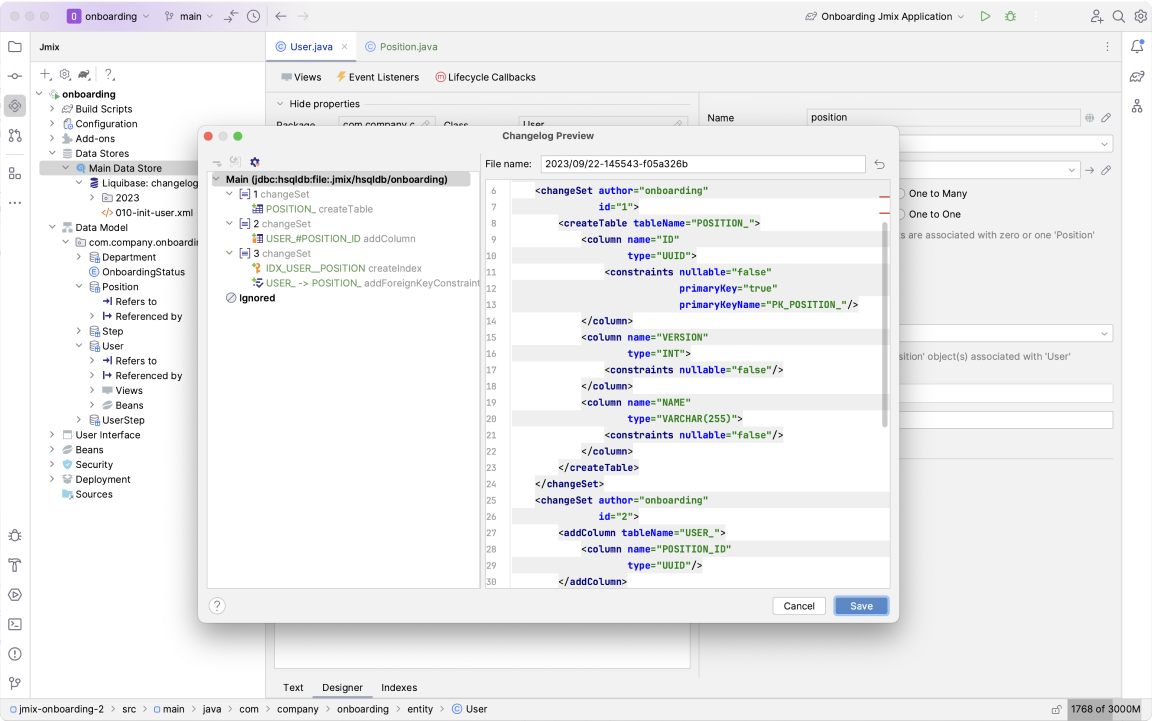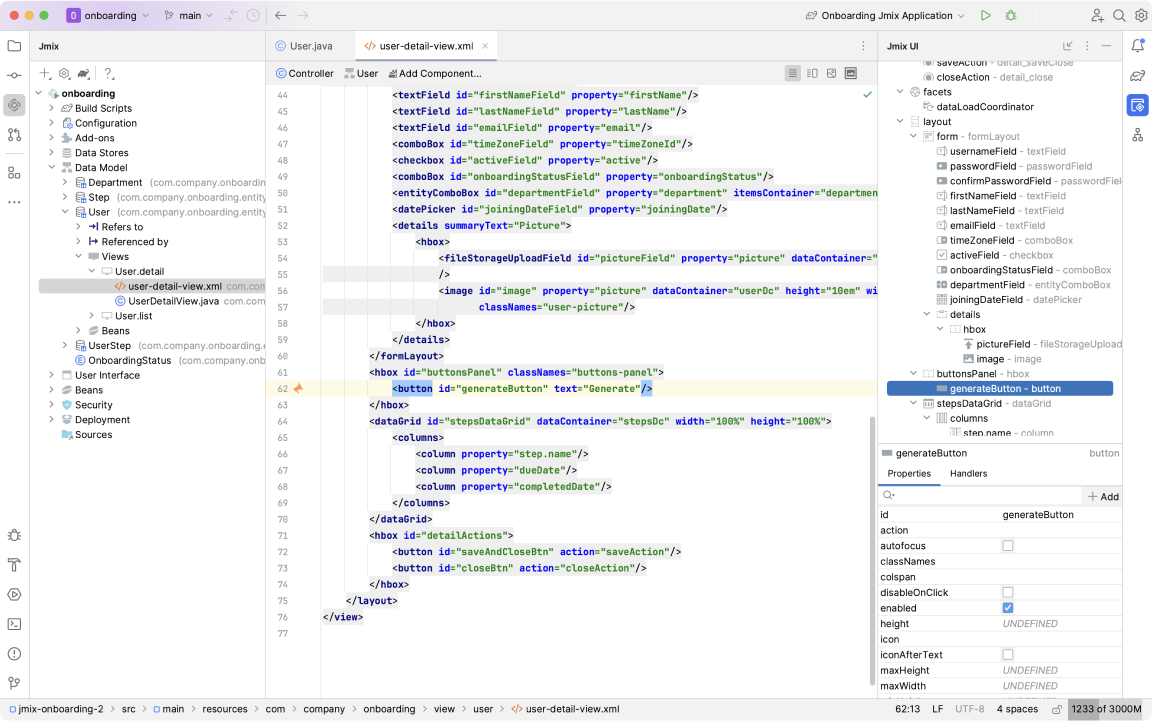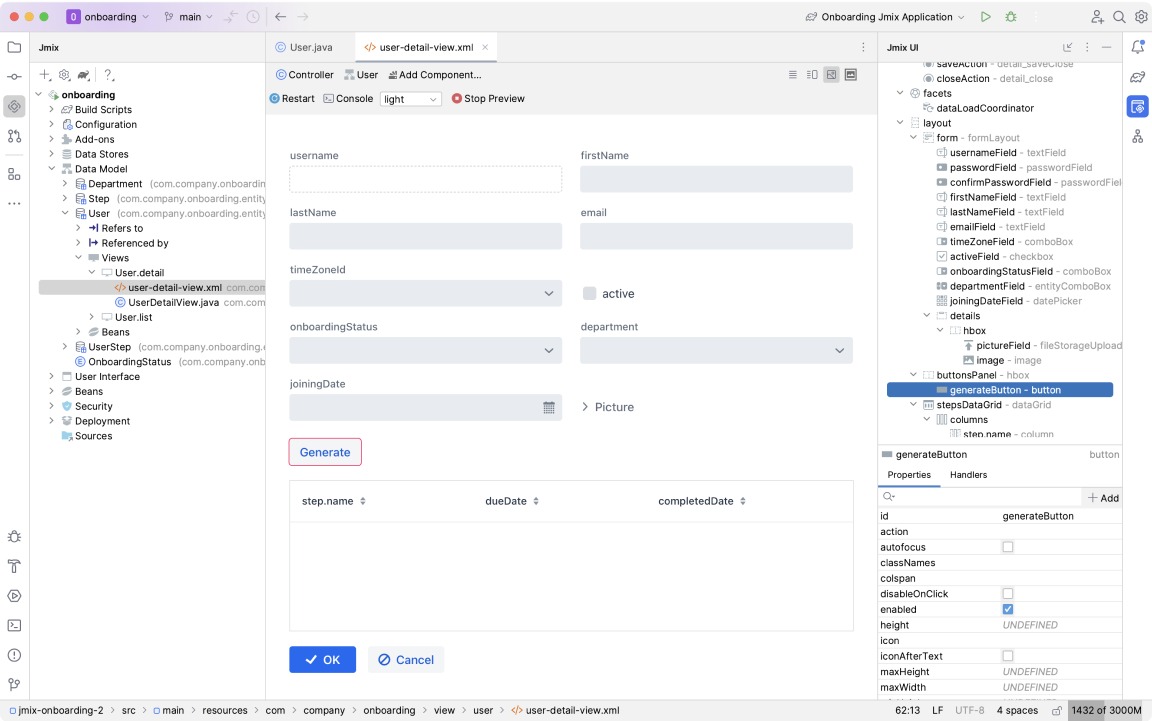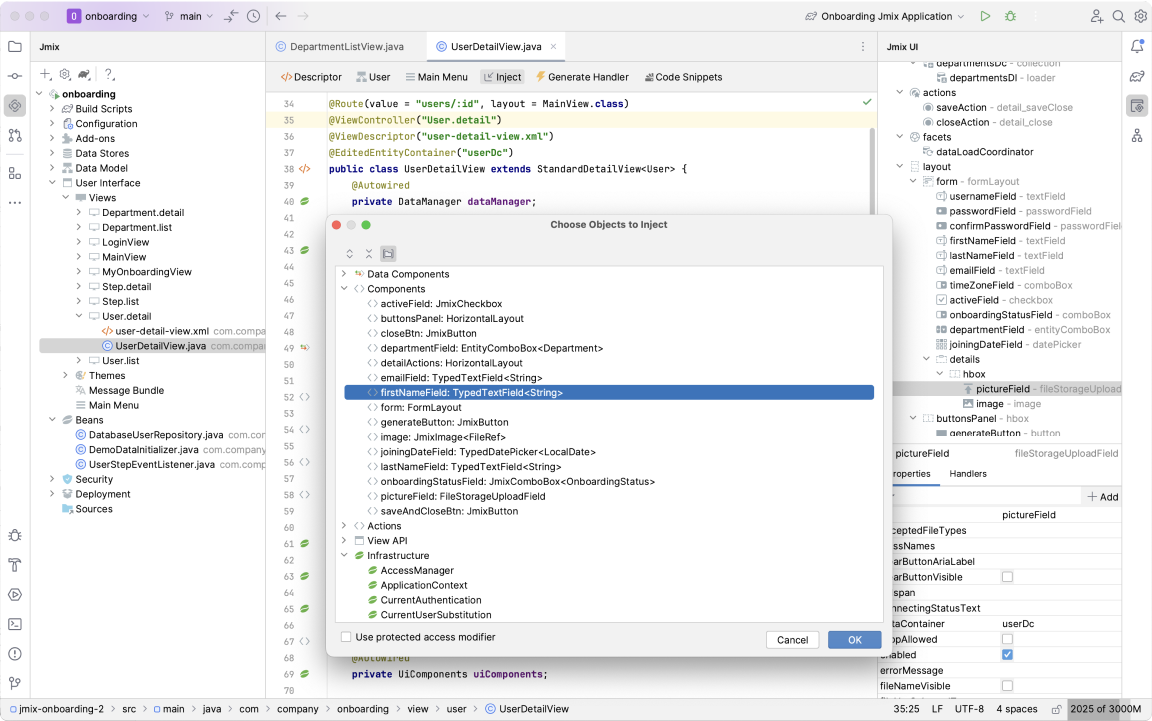
Jmix comprises
three key components:
- Jmix Framework serves as the core open-source library.
- Jmix Studio is a development tool integrated into IntelliJ IDEA.
- Add-ons offer ready-to-use system and business functionality.
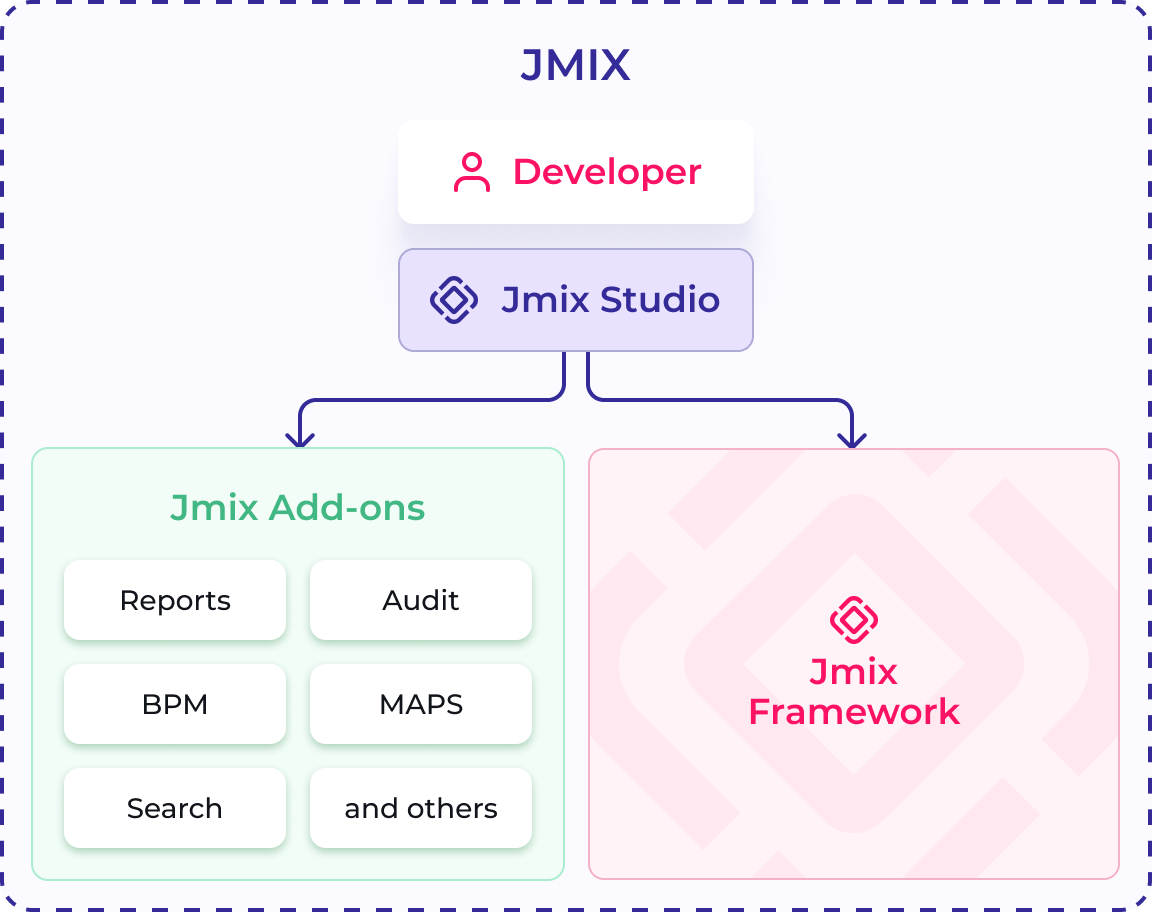
Jmix Framework
The Jmix framework is built on top of Spring and other mainstream Java technologies.
With Jmix, you can use either Java or Kotlin as a single language for both business logic and web UI development.
Jmix Studio
Jmix Studio is a plugin for IntelliJ IDEA Community that assists you throughout all stages of
application development. It helps with creating and configuring projects, defining data models,
generating database versioning scripts, and developing UI views using a visual designer.
Additionally, it offers advanced navigation and coding assistance tailored for Jmix projects.
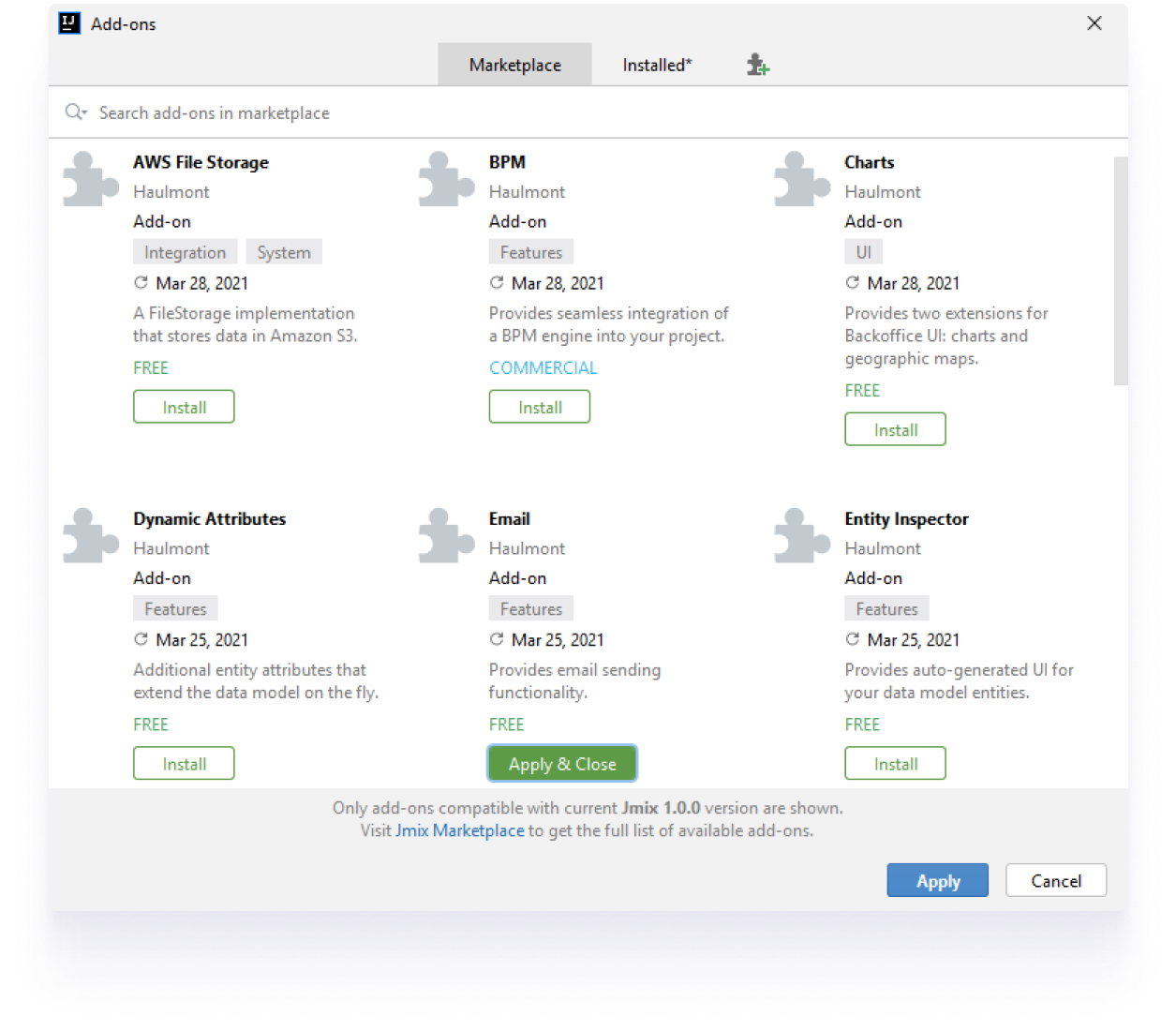
Add-ons
Jmix add-ons are optional modules designed to address typical system and business tasks, ranging from
data auditing and emailing to report generation and business process management.
Many of these add-ons are developed by the Jmix team, with additional contributions from the community.
All Jmix add-ons are readily accessible on the Jmix marketplace, allowing you to conveniently browse
and install them directly within Studio.
Developing an application with Jmix in 6 steps:
- 1Start Your Project:
Open IntelliJ IDEA with Jmix Studio plugin and create a new project using a template.
The framework is downloaded to your development machine by Gradle build tool.
- 2Design the Data Model:
Use Jmix Studio to create entities, attributes, and relationships.
Studio will generate DDL for your database automatically.
- 3Create the UI:Develop user interface for your data model using visual designer in Jmix Studio.
- 4Write Business Logic:Implement the logic of your application in Spring beans.
- 5Add Automatic Tests:Create unit and/or integration tests for both business logic and UI layers
- 6Deploy:
Run the application on the development machine to make sure it works as expected.
Deploy to any cloud or on-premise.

